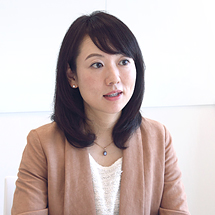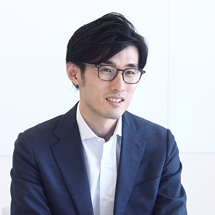STAFF STORY Interviews
STORY
02
Kei Katsuno, M.D., M.P.H.
Senior Director
Investment Strategy & Government Relations
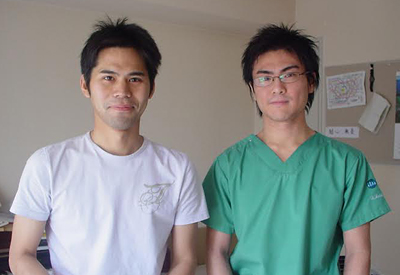
Worked as an emergency medical doctor at the National Center for Global Health and Medicine
Making an International Contribution, Instead of "Just Charity"
During my high school years, I had several opportunities to spend time abroad, which significantly impacted my life thereafter. I learned that people had such different ways of thinking across the world. Around the same time, I watched the television drama Daichi no Ko (in which the main character struggles to reconcile his place in two distinct cultures) and began thinking about how I could contribute to Japan, the country where I was born. These experiences were transformative, creating in me the desire to bring Japan and the world closer together.
As I began to plan my future, I decided to study medicine and diplomacy, which I thought would be useful anywhere in the world. While studying medicine, I interacted with people from different academic departments. After graduating, I worked as a physician at the National Center for Global Health and Medicine (formerly the International Medical Center of Japan) and then studied public health at the Johns Hopkins University in the United States. Before joining GHIT, I worked as Health Specialist at the World Bank after the fellowship at the East-West Center in Hawaii.
When I first learned about GHIT, I intuitively felt that its approach was close to what I had always wanted to do. This was a place where I could realize what I had envisioned: to be involved in both the medical and the diplomatic fields, while contributing to Japan. I was also impressed with the idea that GHIT is “not just a charity,” and that the business model could benefit all stakeholders. I decided to join the team, and was fortunate to be able to do so while GHIT was gearing up for its official launch.
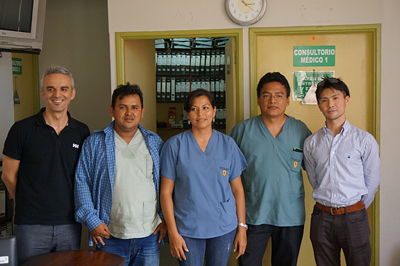
Clinical site visit in Peru: Clinical trial of malaria drug
Creating Robust Strategies and Partnerships
GHIT’s business model makes it unique: contributing to global health as a public–private partnership specializing in product development. GHIT’s success also illustrates that it is possible to help resolve societal problems with strategic fundraising and product development through global partnerships. If GHIT can steadily build up its track record, then similar organizations could emerge across various disciplines, not just domestically, but internationally as well.
I have been heavily involved in GHIT's investment strategy since the beginning. Over the past five years I have been able to work with many people who work in product development. These include individuals at pharmaceutical companies, universities, and research institutes in Japan and abroad. Since GHIT requires product development through partnerships between Japan and overseas institutions as a condition for investment, communication between domestic and international partners is essential.
Fundamentally, GHIT is a Japanese initiative. As such, I am always considering what I can do to create an environment in which Japanese pharmaceutical companies, universities, and research institutes feel supported and encouraged to express their interests in global health and actively participate in the field.
It's also important that the product development partners in whom GHIT invests have a clear understanding of the direction of our organization — and feel empowered to communicate openly about issues and challenges along the way. We strive to share information regularly and to support the entities participating in product development.

Urgency in Medicine and Diplomacy
When I was working as an emergency physician, I had to make on-the-spot judgement calls about whose treatment should be prioritized, based on the conditions of the medical site and the symptoms of the patient, a process known as “triage.” I would repeat this day in and day out, and this habit has stuck with me to this day. When I worked at the World Bank, I learned how to work with high-level stakeholders such as countries and international organizations; specifically, I learned how to move things along and act diplomatically. These contrasting experiences have benefited my current work immensely.
When GHIT was first established, we were looking for ways to create impact quickly. I was in charge of screening projects in those early days, and I remember negotiating over the phone from morning until night to coordinate with Japanese pharmaceutical companies, research organizations, and global product development partnerships. Even now, I value that sense of urgency, and still feel that the sense of urgency and tension I felt at that time was on par with that of a medical site.
Currently, there are more opportunities for collaboration and cooperation with domestic and foreign organizations than ever before. Communication will naturally become more sophisticated and complex, and quite a few variables need to be taken into account when discussing investment strategies. This challenge requires diplomatic skills, and I am excited to take this on.
A Job That Challenges and Engages
No one working in a hospital, particularly in emergency settings, would object to saving a patient who is right in front of them; in that sense, everyone is on the same page. By contrast, each of GHIT’s collaborating institutions has its own vision and mission. First and foremost, a consensus on major goals is absolutely necessary in order to move things forward. This is a big difference between my clinical work and my current role. In addition to clear identification of GHIT’s goals, strategic thinking to determine the best way to achieve results that satisfy all participating stakeholders, as well as clear and diplomatic communication, are necessary.
I have never before experienced a workplace that continues to stimulate my curiosity to this degree on a daily basis. We often create things from scratch. I look forward to tackling new things each and every day, and enjoy challenges as they come.
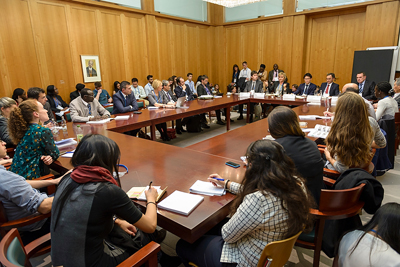
Participation in conferences, such as World Health Summit, to discuss strategic partnership with global health related organizations
GHIT and Public Private Partnership – New Ways of Working
The most attractive feature of GHIT is the way it creates opportunities to bring together Japan’s capacities and capabilities — for example, drug development ability and technology, as well as innovation — to make an impact on the world. We are extremely fortunate to be able to work directly with passionate experts whose work forms the cutting edge of global health innovation, both domestically and overseas.
Many people are interested in comparisons between GHIT and other types of organizations. Various alternatives are similarly engaged in global health: international organizations, nonprofits, research institutions, companies, and more. If GHIT can offer new ways of working in the field of global health, it should be easier to bring in brilliant people with new ideas, creating a synergy that will benefit the country as well. I hope that GHIT can propose new ways to work as a public–private partnership.
What's Next
Recognition of the GHIT Fund is increasing. When I travel overseas, I am often asked about how GHIT was formed and how it continues to operate. I appreciate that other players want to make the GHIT Fund a model for public–private partnerships and fundraising mechanisms. I would like to help lead this model, contributing from Japan on an even broader scope.
The affiliations and positions listed in this interview are at the time of publication of the interview in 2017.
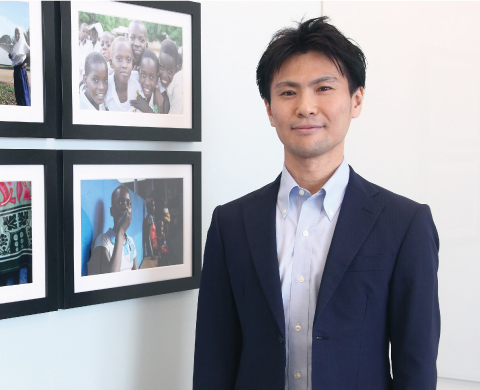
- Biography
Kei Katsuno, M.D., M.P.H.
Senior Director
Investment Strategy & Government RelationsKei Katsuno is Director of Investment Strategy & Development, and Government Affairs. Prior to his current assignment, he worked as a Health Specialist at the World Bank, following his completion of a fellowship at the Asia Pacific Leadership Program at the East West Center. Dr. Katsuno graduated from the University of Tokyo with a medical degree and worked as a medical doctor in the Emergency Medicine Department of the National Center for Global Health and Medicine (formerly; International Medical Center of Japan). He possesses both Japanese and the US medical licenses (ECFMG) and completed the Master of Public Health (MPH) program at the Johns Hopkins University as a Fulbright Scholar. He is also a fellow of the US-Japan Leadership Program.




